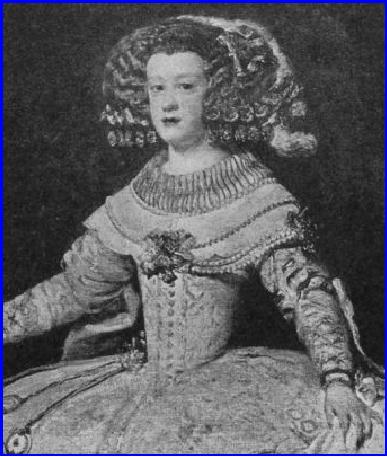 |
COLOUR IN WOMAN'S COSTUME |
| << ESTABLISH HABITS OF CARRIAGE WHICH CREATE GOOD LINE |
| FOOTWEAR >> |

The
Eton boy masters his
stick and topper in the same
way, when young, and
so
more
easily passes through the
formless stage conspicuous in
the American youth.
Call it
technique, or call it efficiency,
the object of our modern
life is to excel, to be
the
best of our kind, and
appropriate dress is a means to
that end, for it helps
to
liberate
the spirit. We of to-day make no
claim to consistency or logic.
Some of us
wear
too high heels, even
with strictly tailored
suits, which demand in the name
of
consistency
a sensible shoe. Also our sensible
skirt may be far too
narrow for
comfort.
But on the whole, women
have made great strides in the
matter of
costuming
with a view to appropriateness and
efficiency.
CHAPTER
VI
COLOUR
IN WOMAN'S COSTUME
OLOUR
is the
hall-mark of our day, and
woman decoratively
costumed,
and as decorator, will be largely
responsible for recording
this
age
as one of distinct importance--a
transition period in
decoration.
Colour
is the most marked expression of
the spirit of the times;
colour in woman's
clothes;
colour in house furnishing; colour on
the stage and in its
setting; colour in
prose
and verse.
Speaking
of colour in verse, Rudyard Kipling
says (we quote from an
editorial in
the
Philadelphia Public
Ledger, Jan. 7,
1917):
"Several
songs written by Tommy and
the Poilu at the front,
celebrate the glories of
camp
life in such vivid colors
they could not be reproduced
in cold, black, leaden
type."
It
is no mere chance, this use of vivid
colour. Man's psychology
to-day craves it. A
revolution
is on. Did not the
strong red, green, and blue of
Napoleon's time
follow
the
delicate sky-blues, rose and
sunset-yellows of the
Louis?
Colour
pulses on every side, strong, clean,
clear rainbow colour, as if
our magicians
of
brush and dye-pot held a
prism to the sun-beam;
violet, orange and green,
magentas
and strong blue against backgrounds of
black and cold grey.
We
had come to think of colour as vice and
had grown so conservative in
its use,
that
it had all but disappeared
from our persons, our
homes, our gardens, our
music
and
our literature. More than
this, from our point of
view! The reaction was
bound
to
come by reason of eternal
precedent.
Half-tones,
antique effects, and general
monotony,--the material expression
of
complacent
minds, has been cast
aside, and the blas�
man of ten years ago is
as
keen
as any child with his
first linen picture
book,--and for the same
reason.
Colour,
as we see it to-day, came
out of the East via
Persia. Bakst in Russia
translated
it into terms of art, and
made the Ballet Russe an
amazing, enthralling
vision!
Then Poiret, wizard among
French couturi�res, assisted by
Bakst, adapted
this
Oriental colour and line to
woman's uses in private
life. This supplemented
the
good
work of le
Gazette du Bon Ton of Paris,
that effete fashion sheet,
devoted to
the
decoration of woman, whose
staff included many of the
most gifted French
artists,
masters of brush and pen.
Always irregular, no issue of
the Bon
Ton has
appeared
of late. It is held up by the
war. The men who
made it so fascinating a
guide
to woman "who would be
decorative," are at the
front, painting scenery
for
the
battlefield--literally that: making
mock trees and rocks, grass
and hedges and
earth,
to mislead the fire of the
enemy, and doubtless the
kindred Munich art
has
been
diverted into similar
channels.
This
Oriental colour has made
its way across Europe
like some gorgeous bird of
the
tropics,
and since the war has checked
the output of Europe's factories,
another
channel
has supplied the same
wonderful colours in silks
and gauze. They come
to
us
by way of the Pacific, from
China and from Japan.
There is no escaping
the
colour
spell. Writers from the
front tell us that it is as if
the gods made sport
with
fate's
anvil, for even the
blackened dome of the war
zone is lurid by night,
with
sparks
of purple, red, green, yellow and
blue; the flare of the
world-destroying
projectiles.
PLATE
IX
A
Velasquez portrait of the
Renaissance,
when
the human form counted
only as a rack
on
which was heaped crinoline and
stiff
brocades
and chains and gems and wigs
and
every
manner of elaborate
adornment,
making
mountains of poor tottering
human
forms,
all but lost beneath.

Vienna
Hofmuseum
Spain-Velasquez
Portrait
The
present costuming of woman, when
she treats herself as decoration, owes
much
to
the prophets of the "new"
theatre and their colour scale. These
men have
demonstrated,
in an unforgettable manner, the
value of colour; the
dependence of
every
decorative object upon
background; shown how
fraught with meaning can
be
an
uncompromising outline, and the
suggestiveness of really significant
detail.
Bakst,
Rheinhardt and Granville
Barker have taught us the
new colour
vocabulary.
Gordon
Craig was perhaps the first
to show us the stage made
suggestive by
insisting
on the importance of clever
lighting to produce atmosphere and
elimination
of unessential objects, the
argument of his school being
that the too
detailed
reproducing of Nature (on
the stage) acts as a check
to the imagination,
whereas
by the judicious selection of
harmonics, the imagination is
stimulated to its
utmost
creative capacity. One
detects this creed to-day in
certain styles of
home
decoration
(woman's background), as well as in
woman's costumes.
Portable
Backgrounds
The
staging of a recent play
showed more plainly than
any words, the
importance
of
background. In one of the scenes,
beautiful, artistic gowns in
delicate shades
were
set off by a room with
wonderful green walls and woodwork
(mignonette).
Now,
so long as the characters moved
about the room, they
were thrown into
relief
most
charmingly, but the moment
the women seated themselves
on a very light
coloured
and characterless chintz sofa,
they lost their decorative
value. It was
lacking
in harmony and contrast. The
two black sofa cushions
intended possibly to
serve
as background, being small,
instantly disappeared behind
the seated
women.
Table of Contents:
- A FEW HINTS FOR THE NOVICE WHO WOULD PLAN HER COSTUMES
- THE LAWS UNDERLYING ALL COSTUMING OF WOMAN
- HOW TO DRESS YOUR TYPE
- THE PSYCHOLOGY OF CLOTHES
- ESTABLISH HABITS OF CARRIAGE WHICH CREATE GOOD LINE
- COLOUR IN WOMAN'S COSTUME
- FOOTWEAR
- JEWELRY AS DECORATION
- WOMAN DECORATIVE IN HER BOUDOIR
- WOMAN DECORATIVE IN HER SUN-ROOM
- I. WOMAN DECORATIVE IN HER GARDEN:WOMAN DECORATIVE ON THE LAWN
- WOMAN AS DECORATION WHEN SKATING
- WOMAN DECORATIVE IN HER MOTOR CAR
- HOW TO GO ABOUT PLANNING A PERIOD COSTUME
- I. THE STORY OF PERIOD COSTUMES:II. EGYPT AND ASSYRIA
- DEVELOPMENT OF GOTHIC COSTUME
- THE RENAISSANCE
- EIGHTEENTH CENTURY
- WOMAN IN THE VICTORIAN PERIOD
- SEX IN COSTUMING
- LINE AND COLOUR OF COSTUMES IN HUNGARY
- STUDYING LINE AND COLOUR IN RUSSIA
- MARK TWAIN'S LOVE OF COLOUR IN ALL COSTUMING
- THE ARTIST AND HIS COSTUME
- IDIOSYNCRASIES IN COSTUME
- NATIONALITY IN COSTUME
- MODELS
- WOMAN COSTUMED FOR HER WAR JOB
- IN CONCLUSION